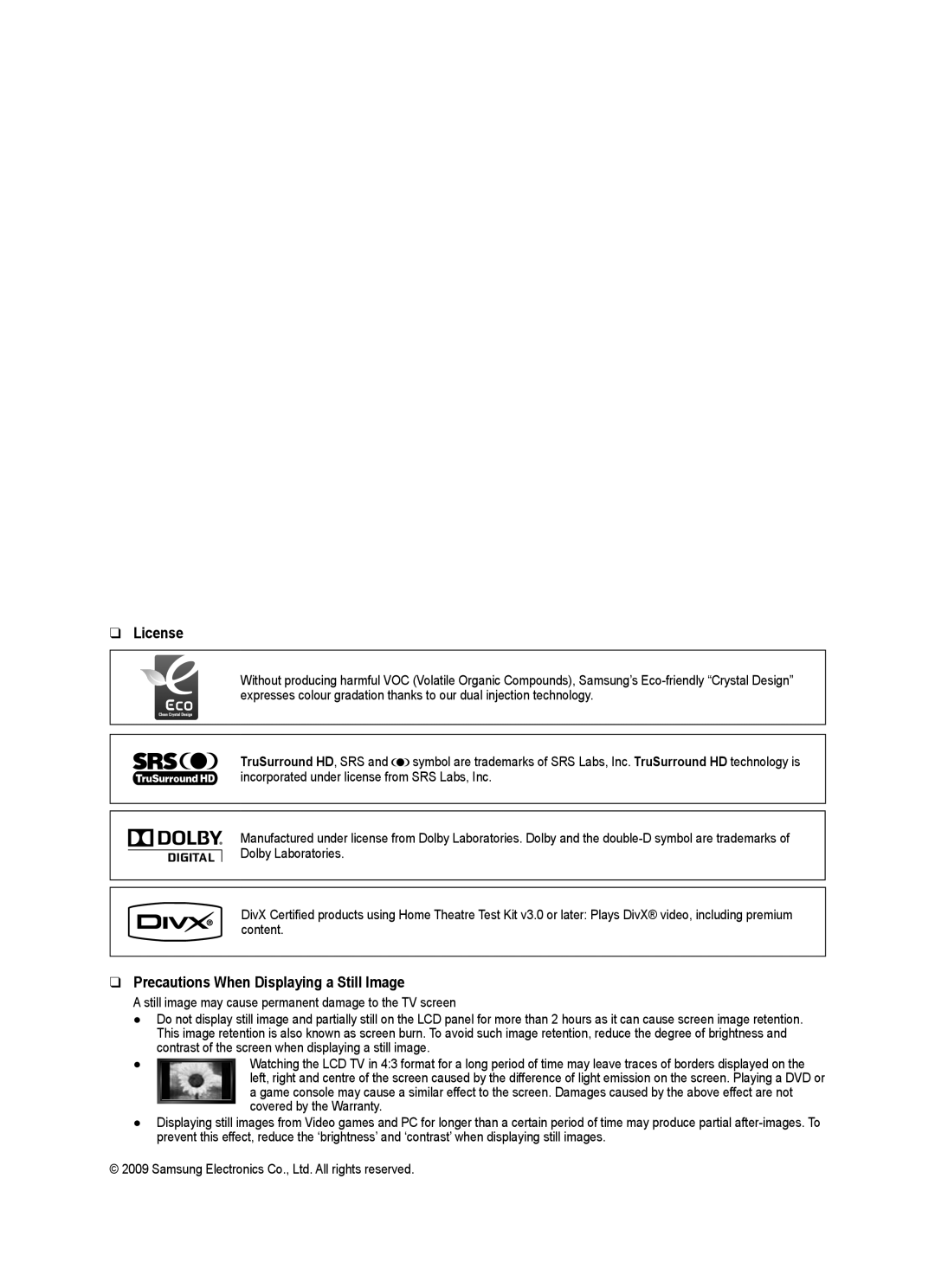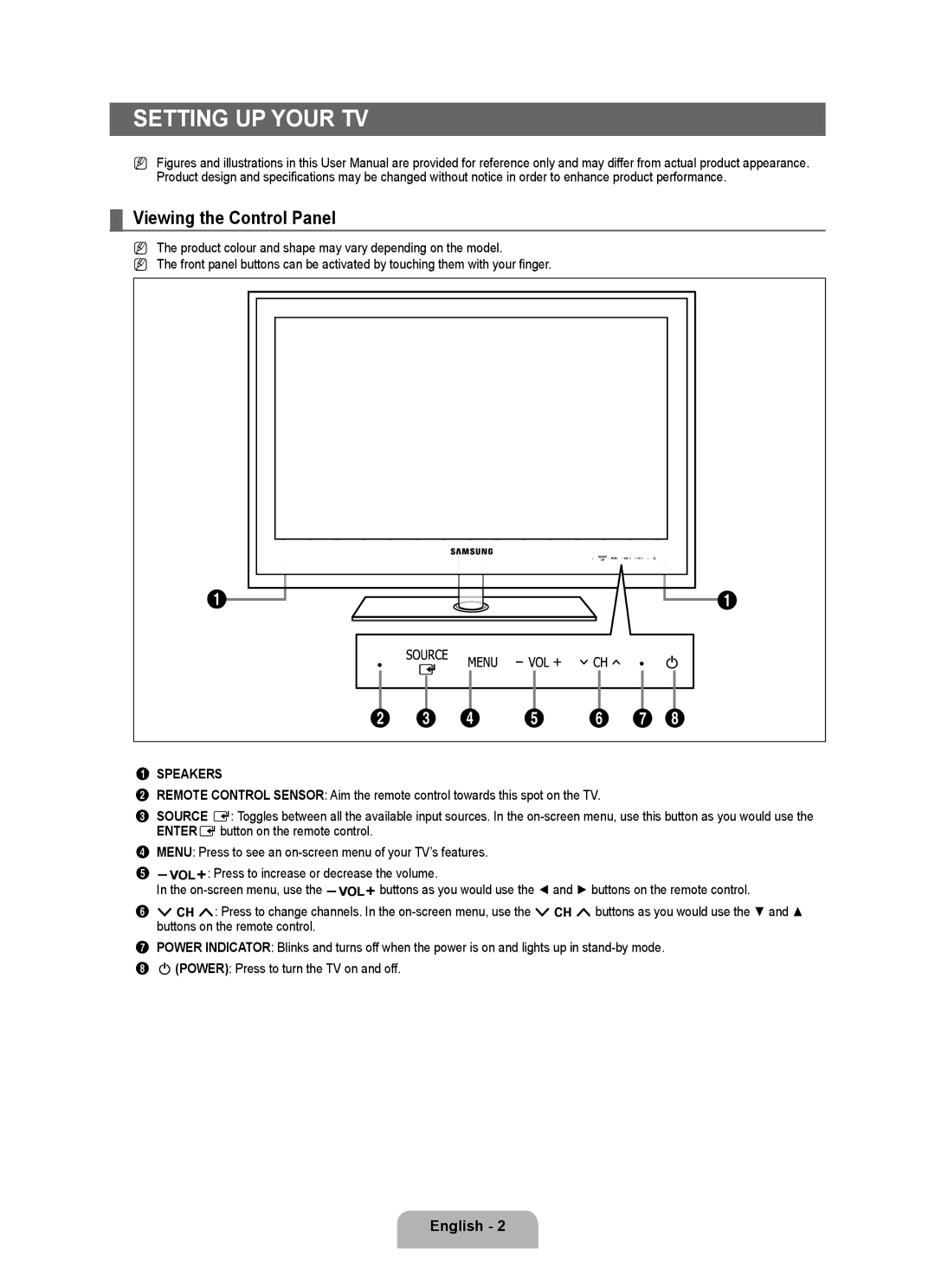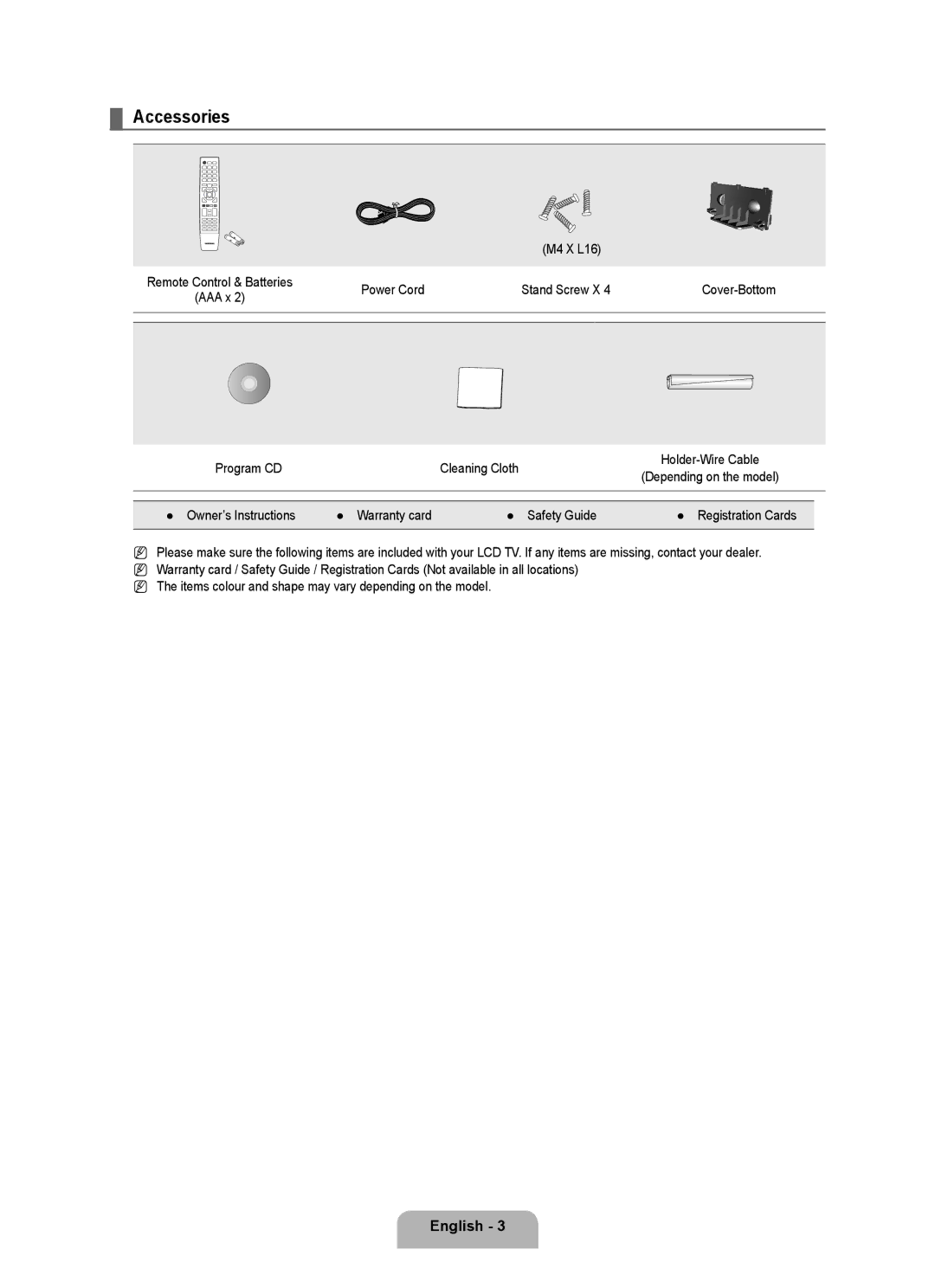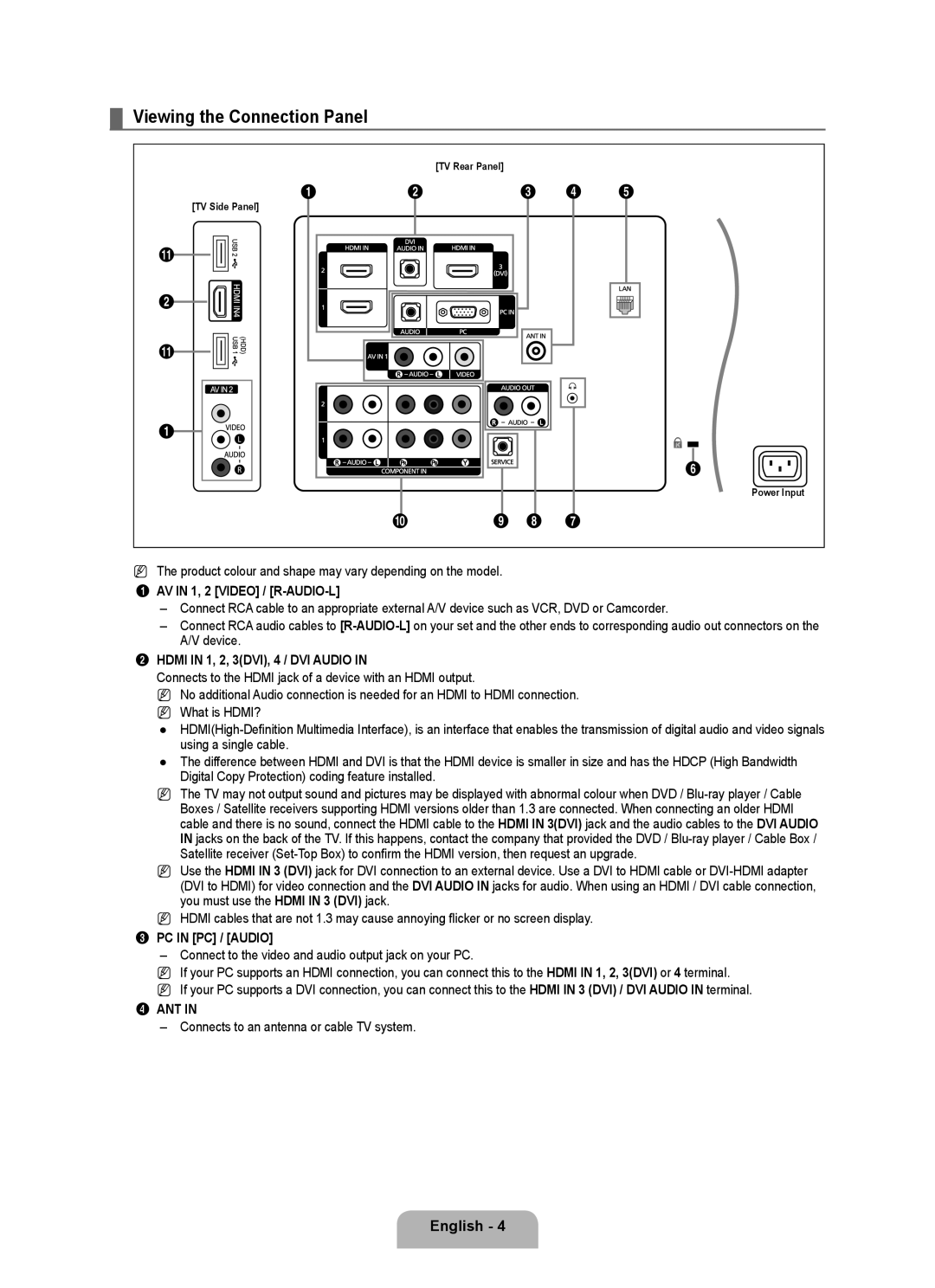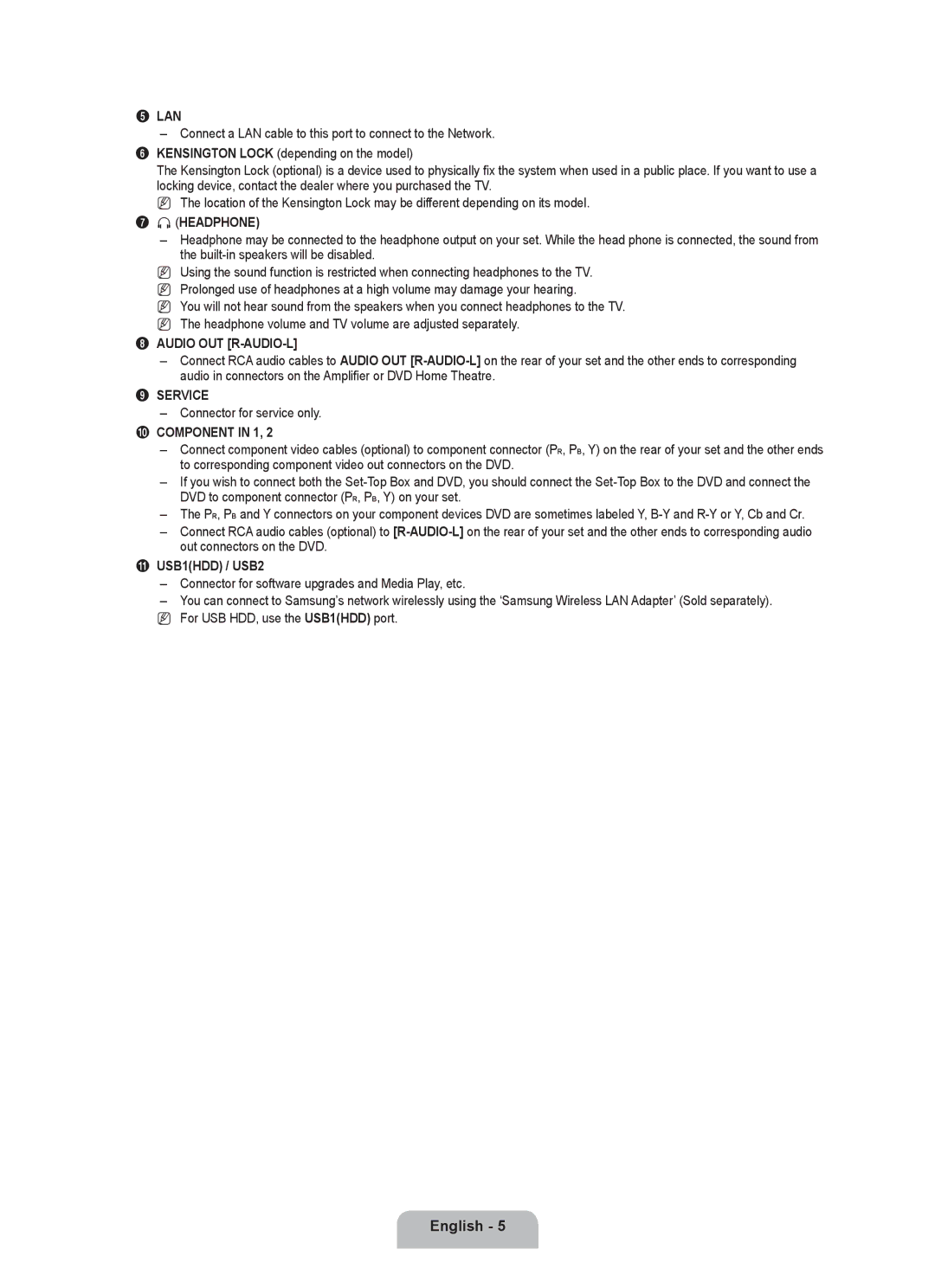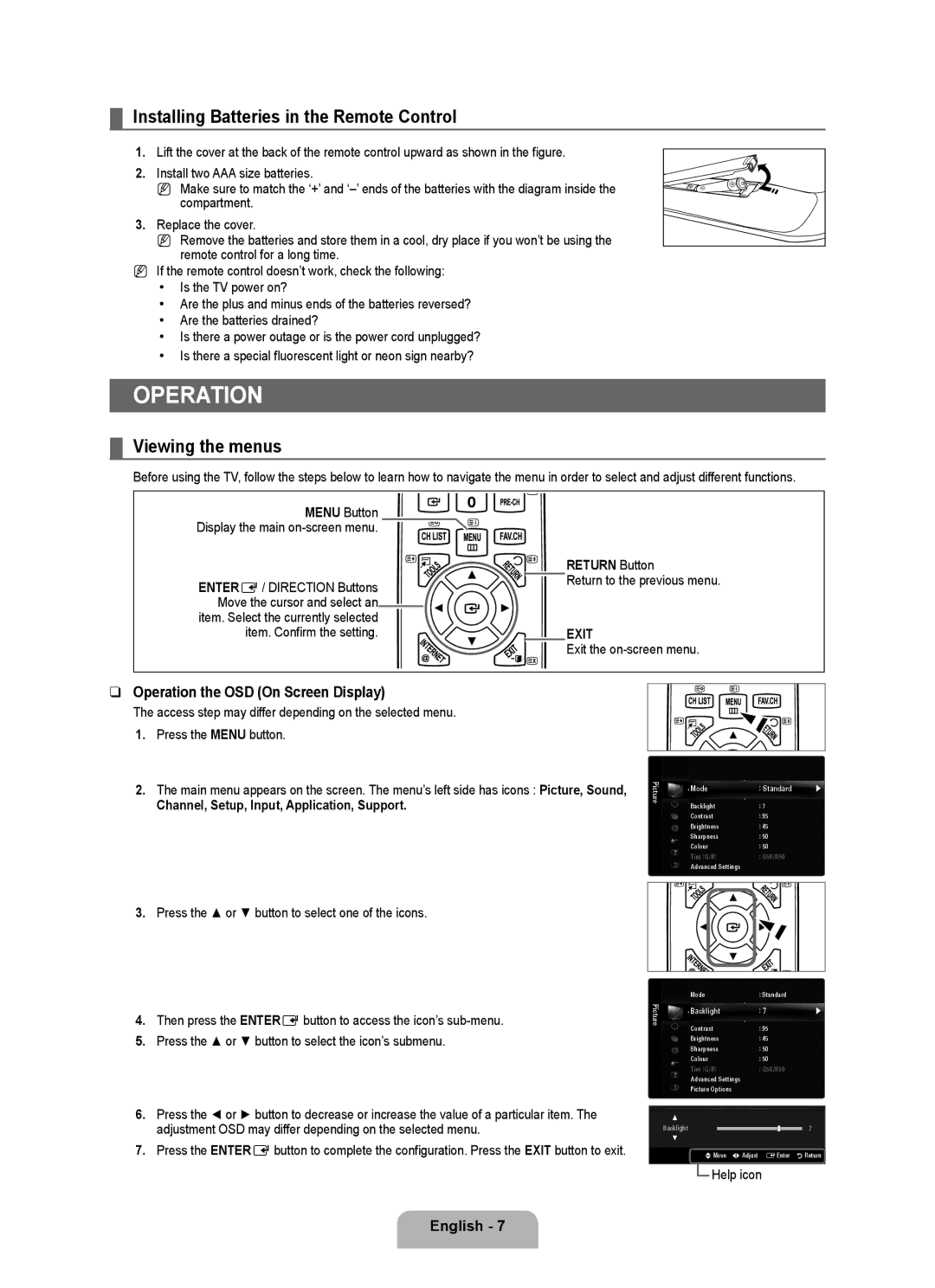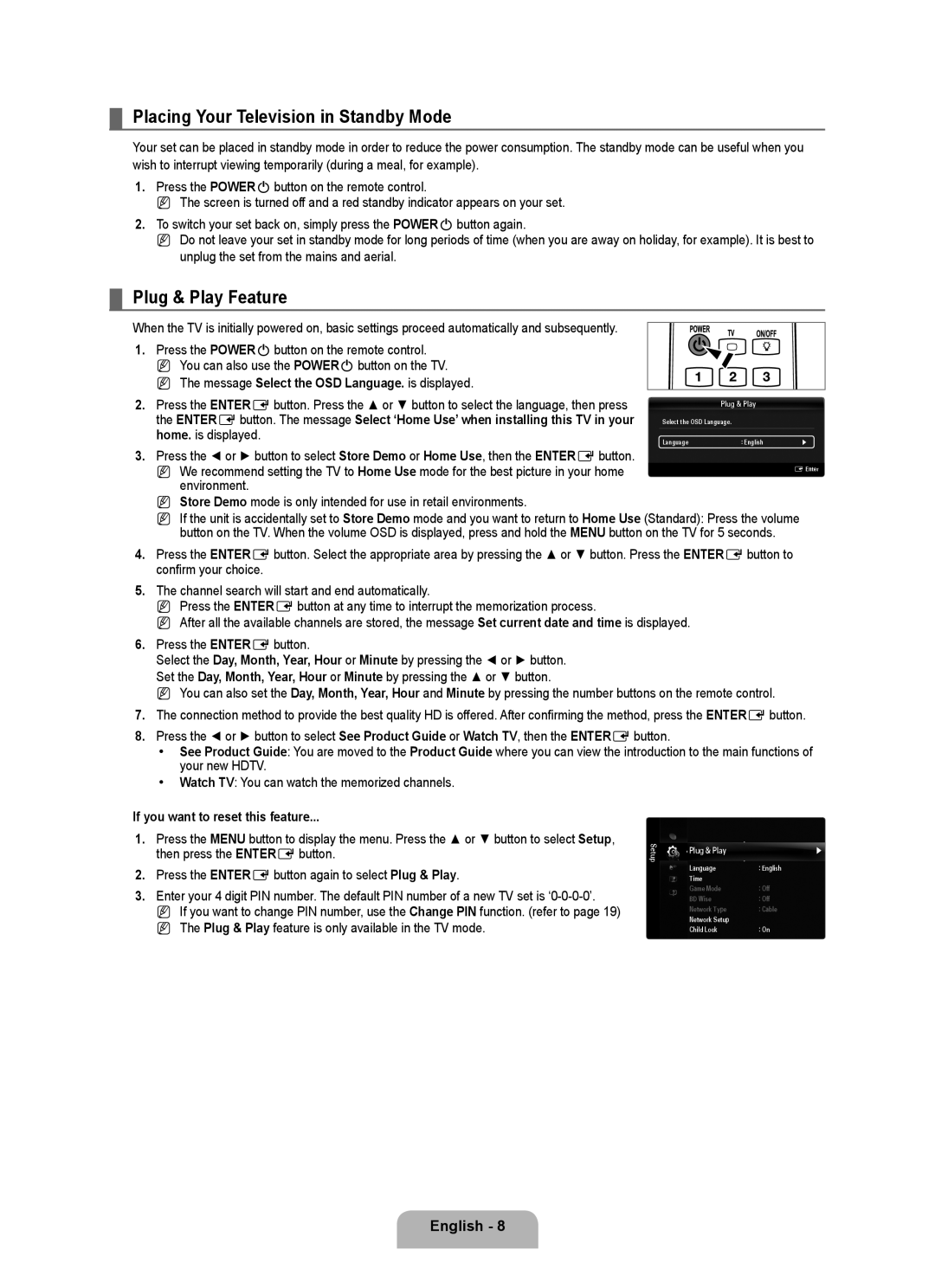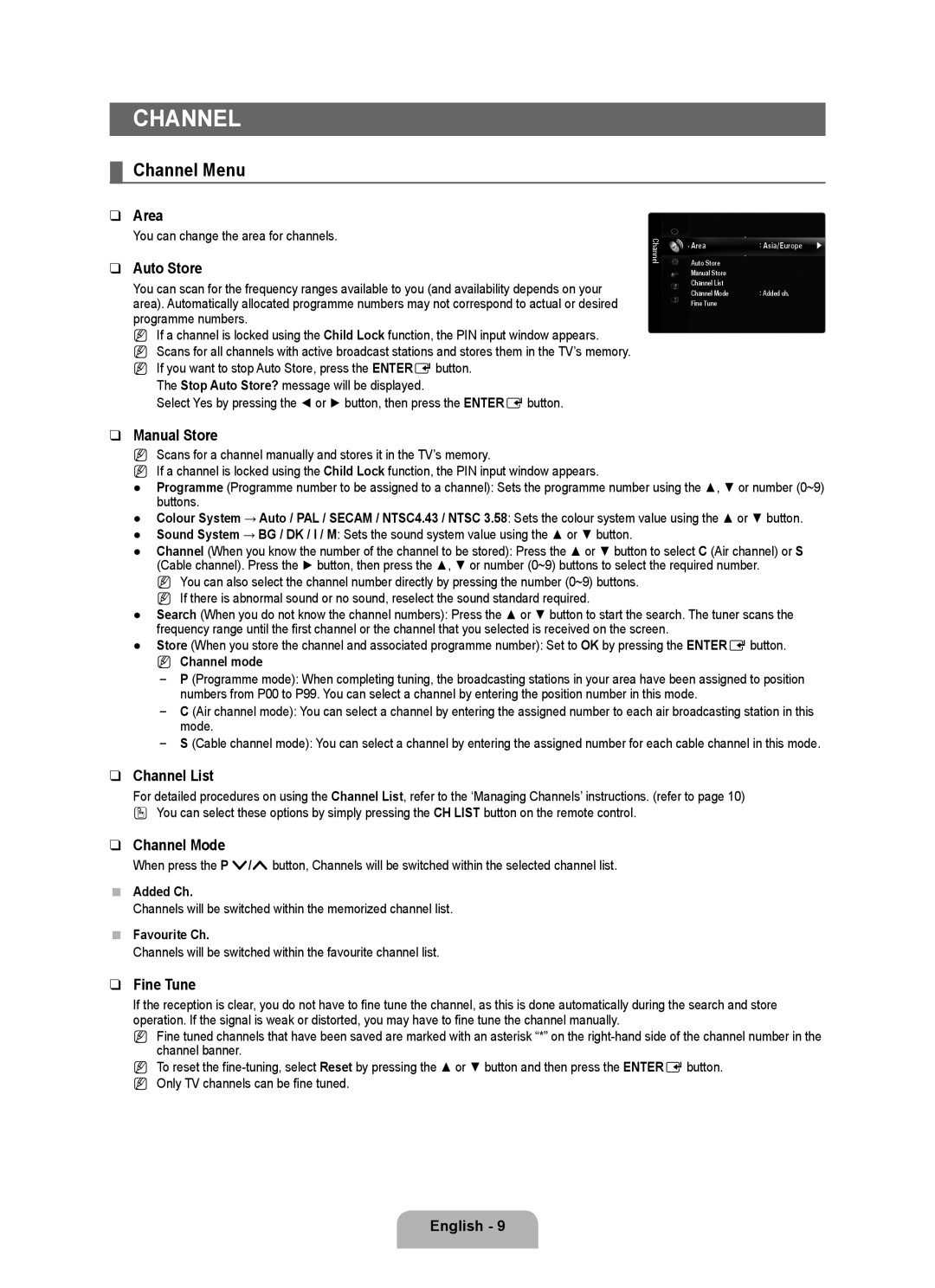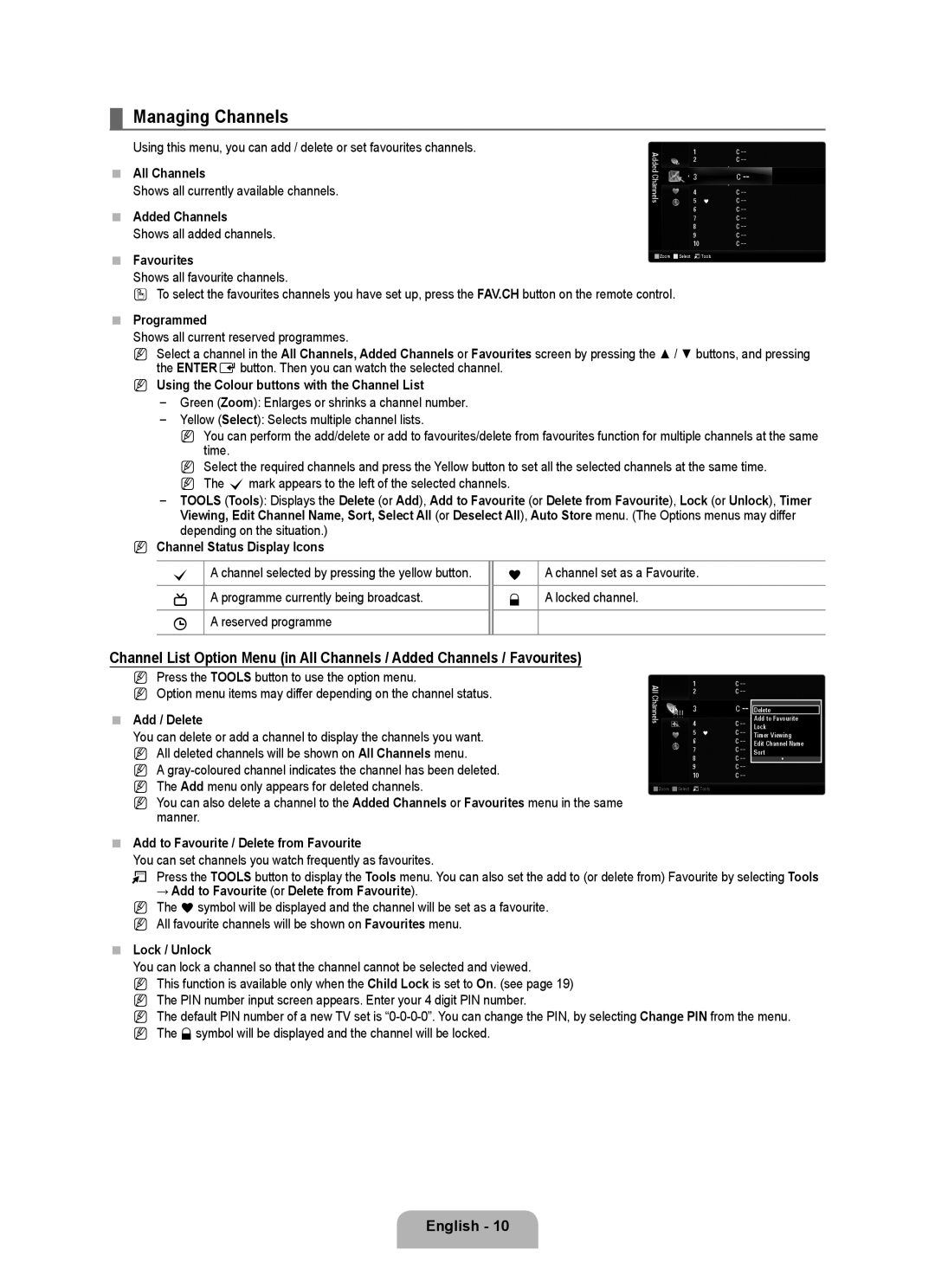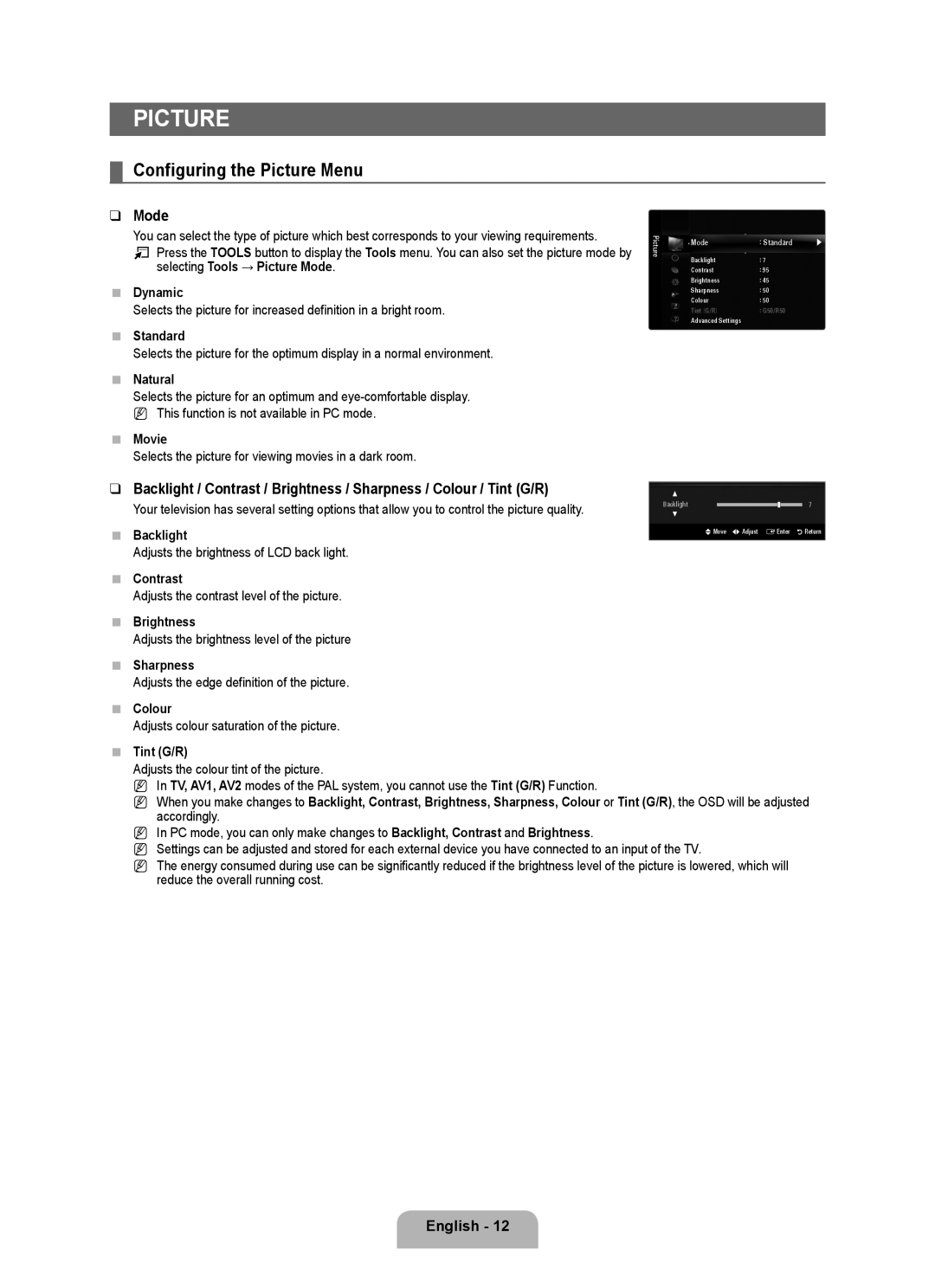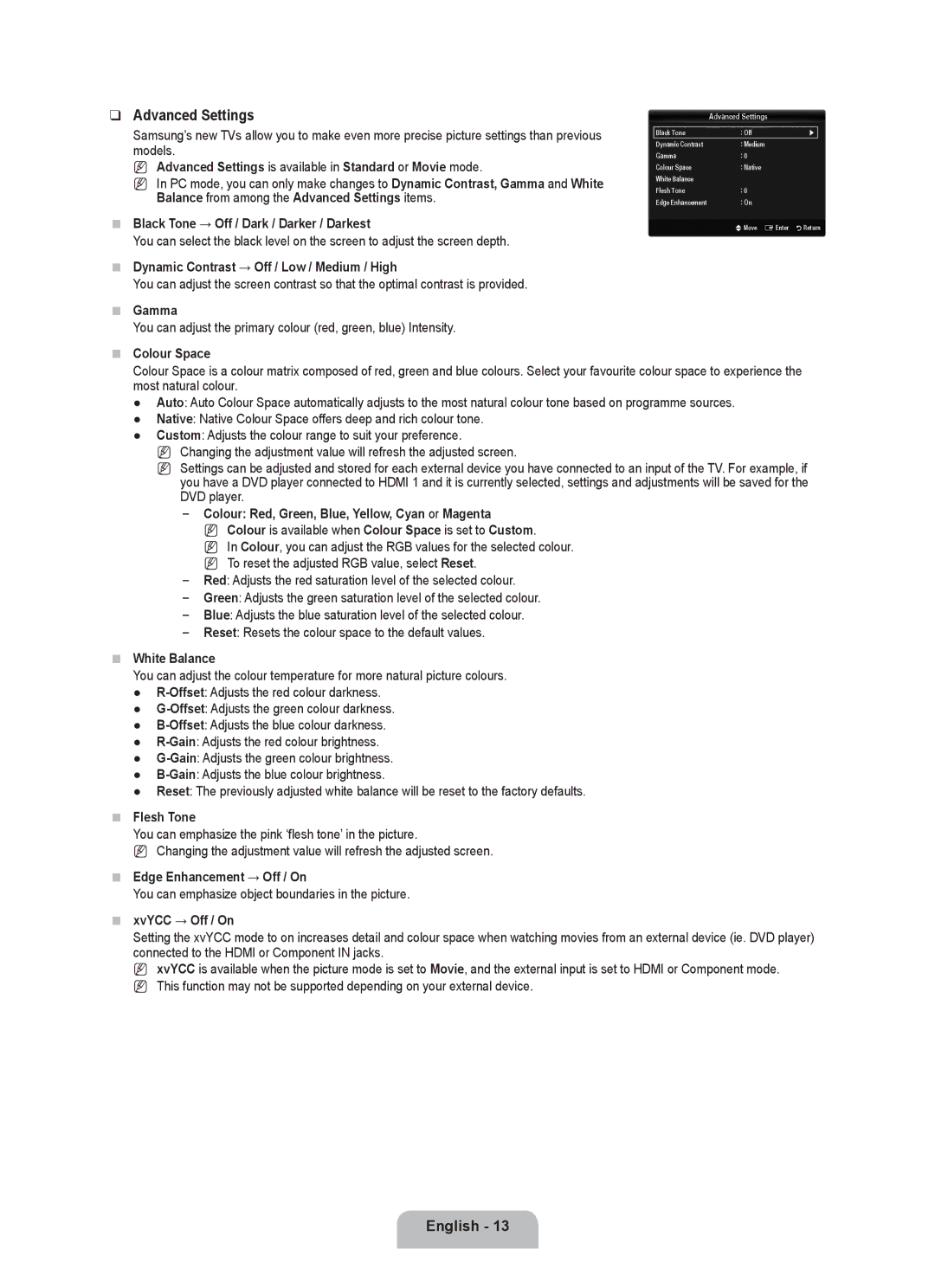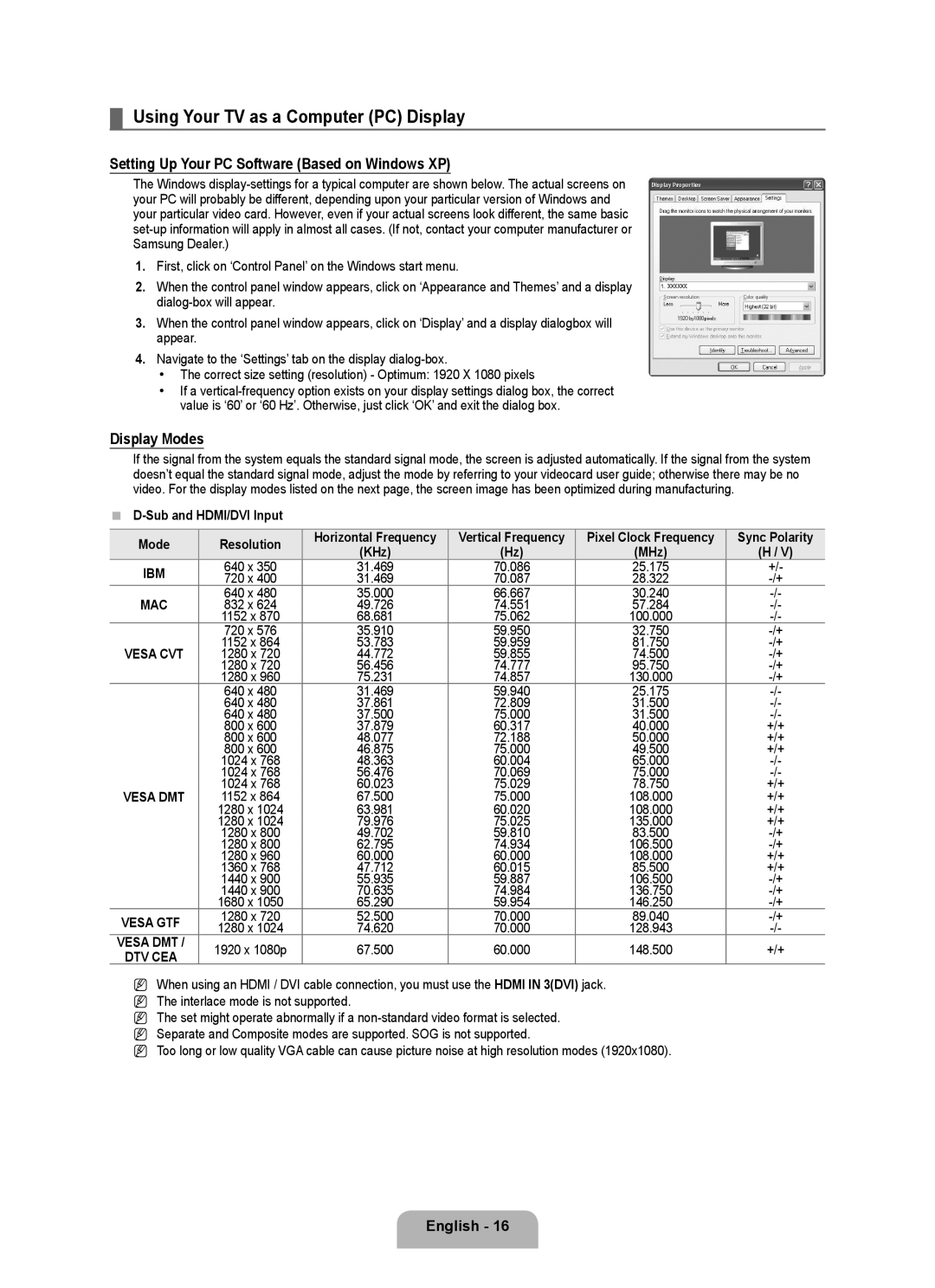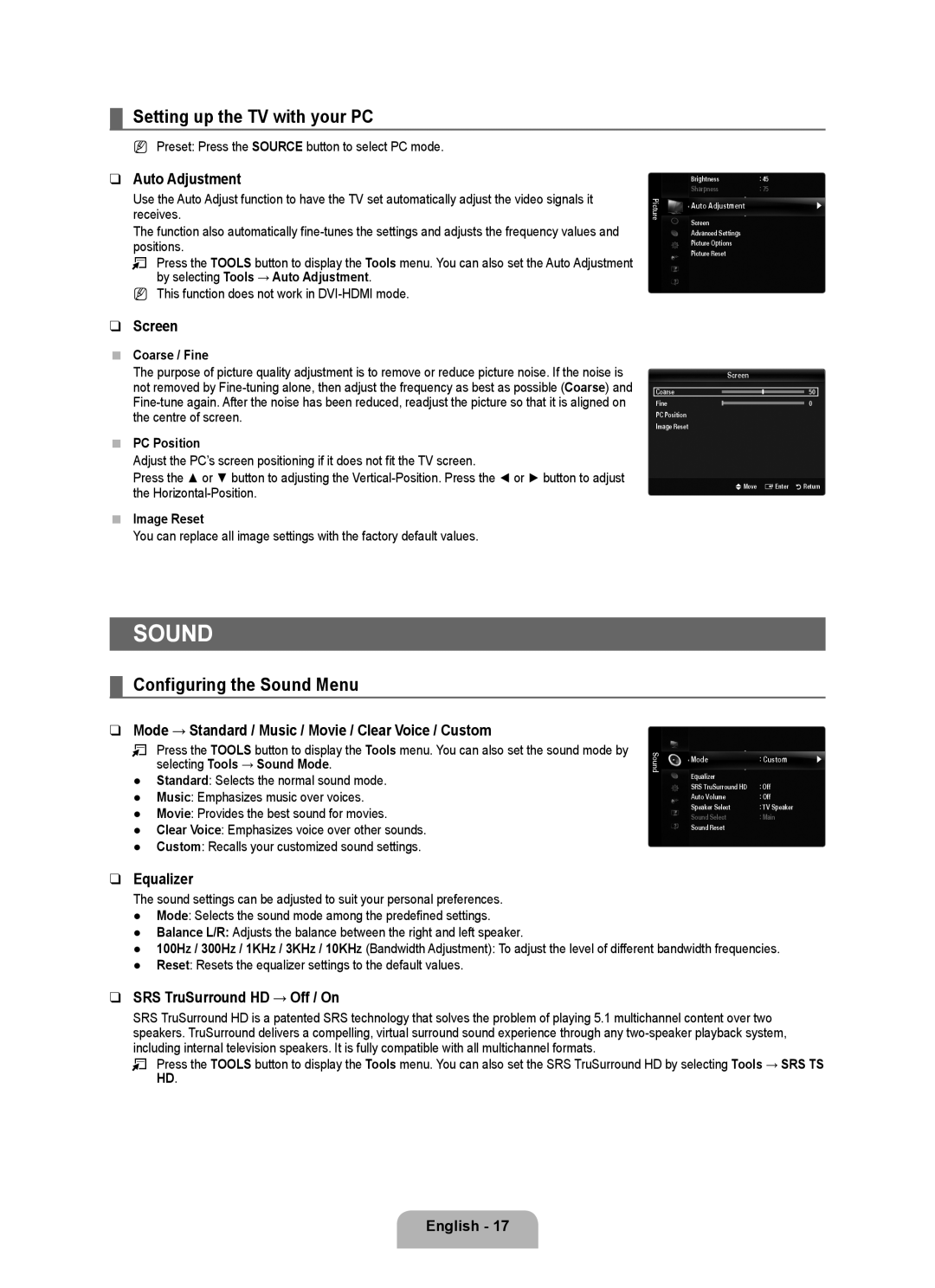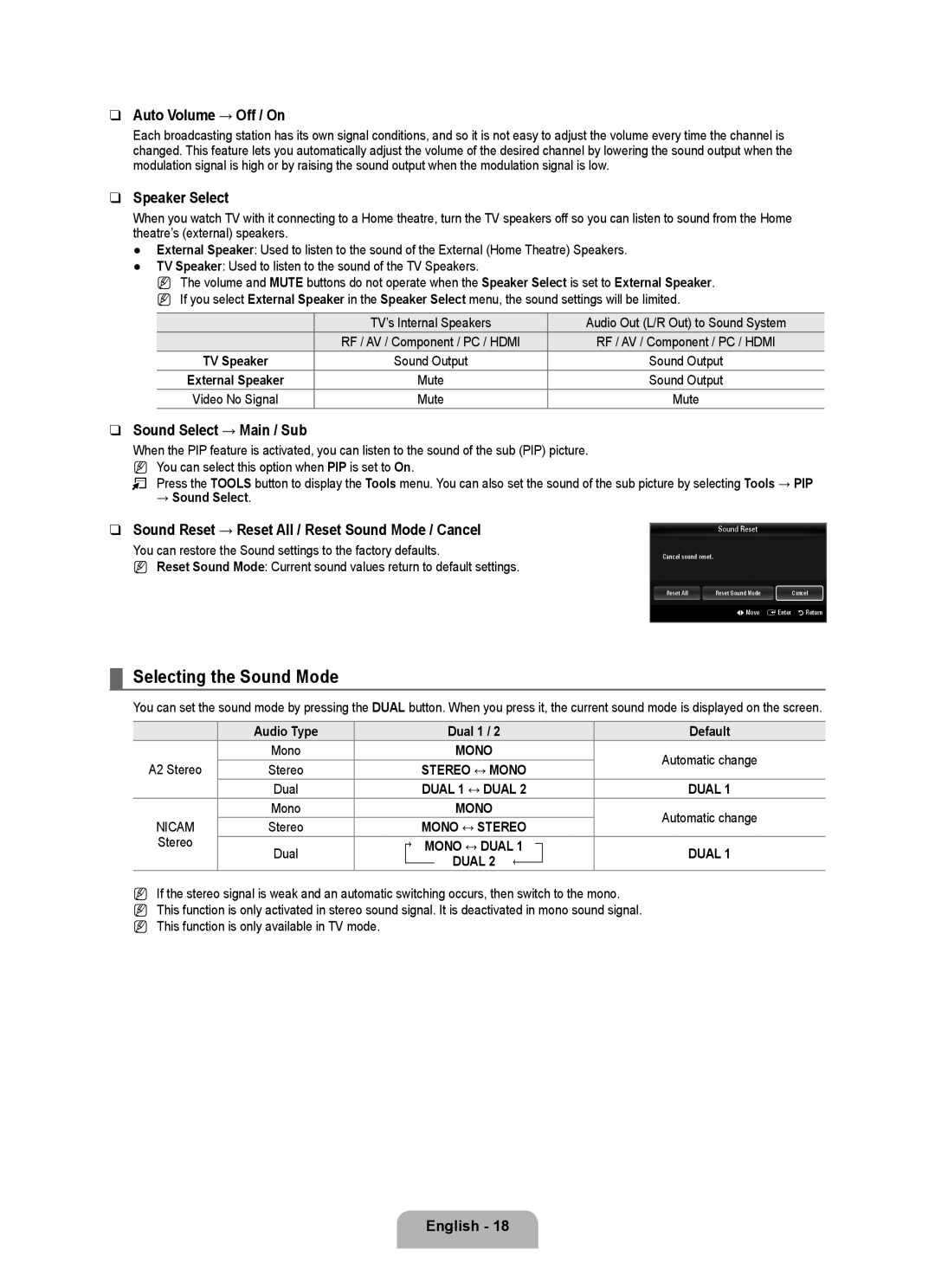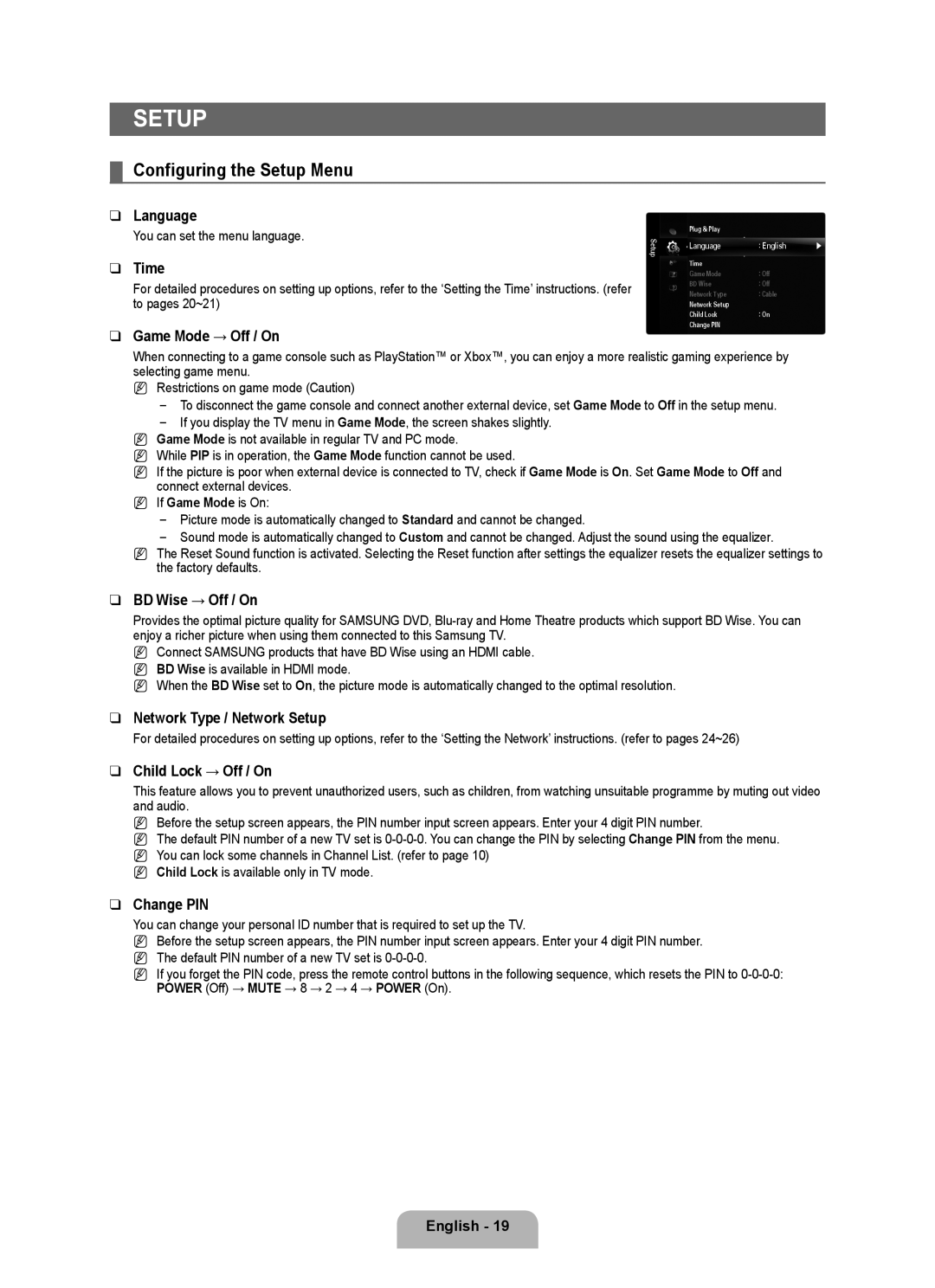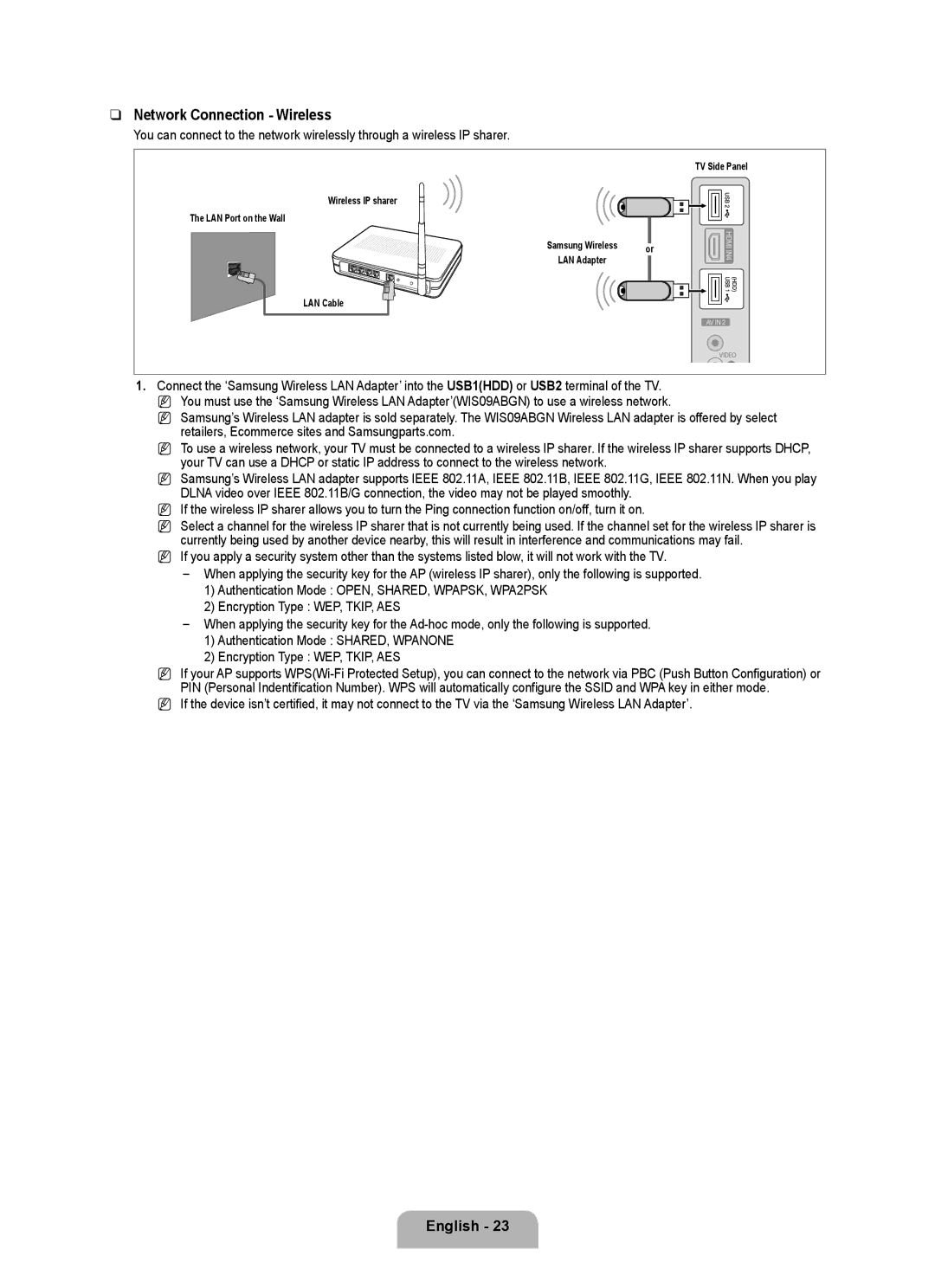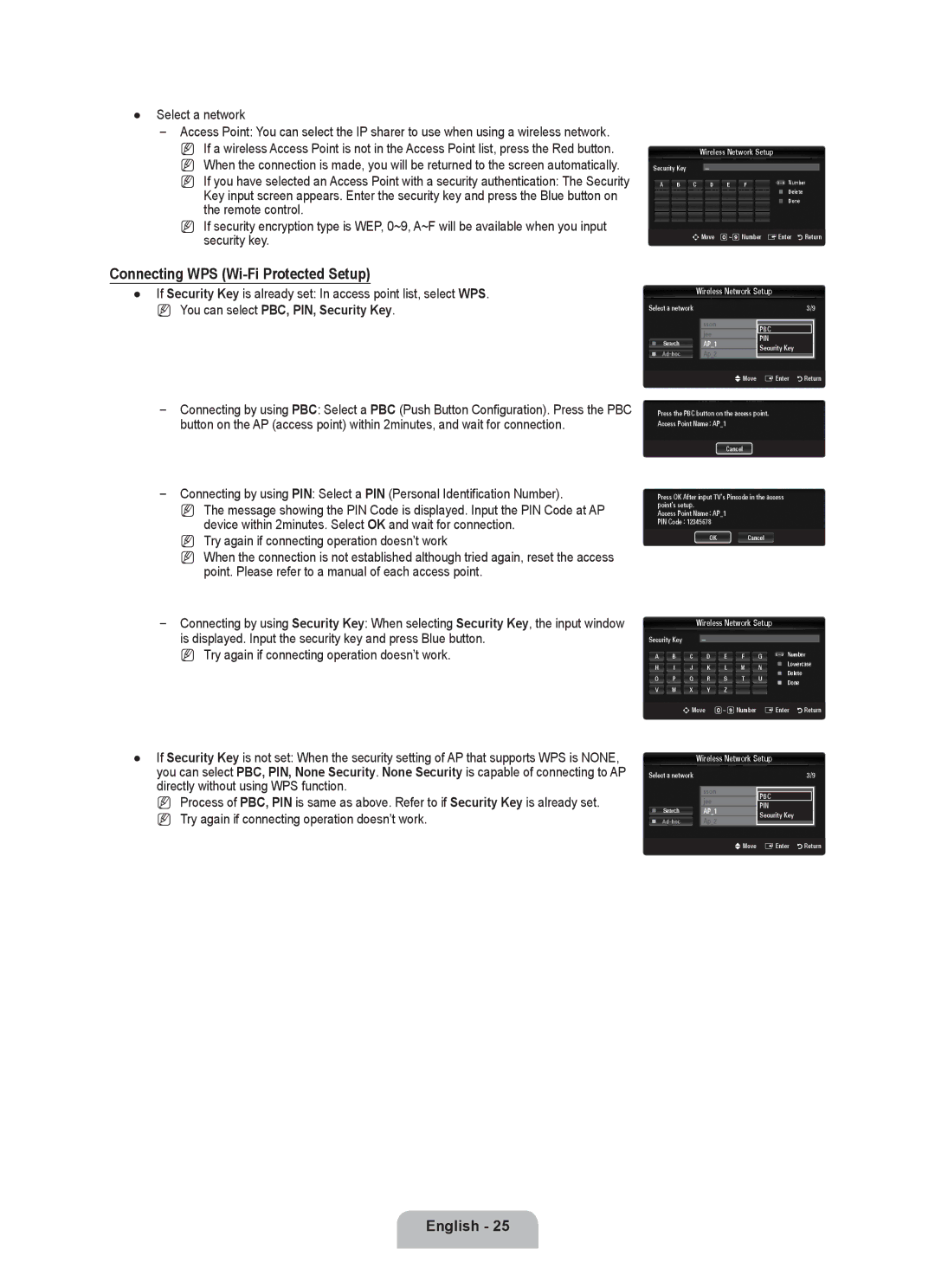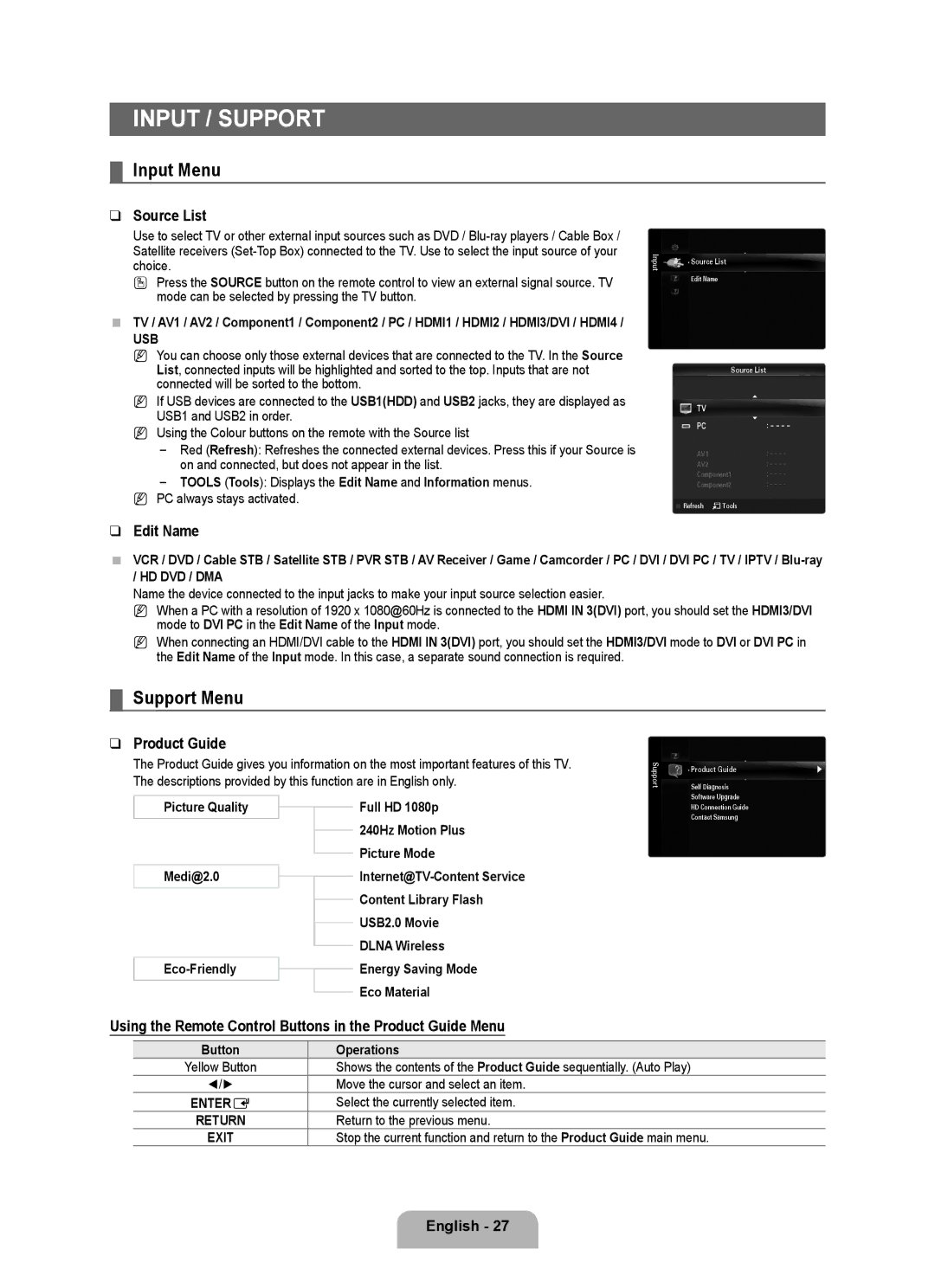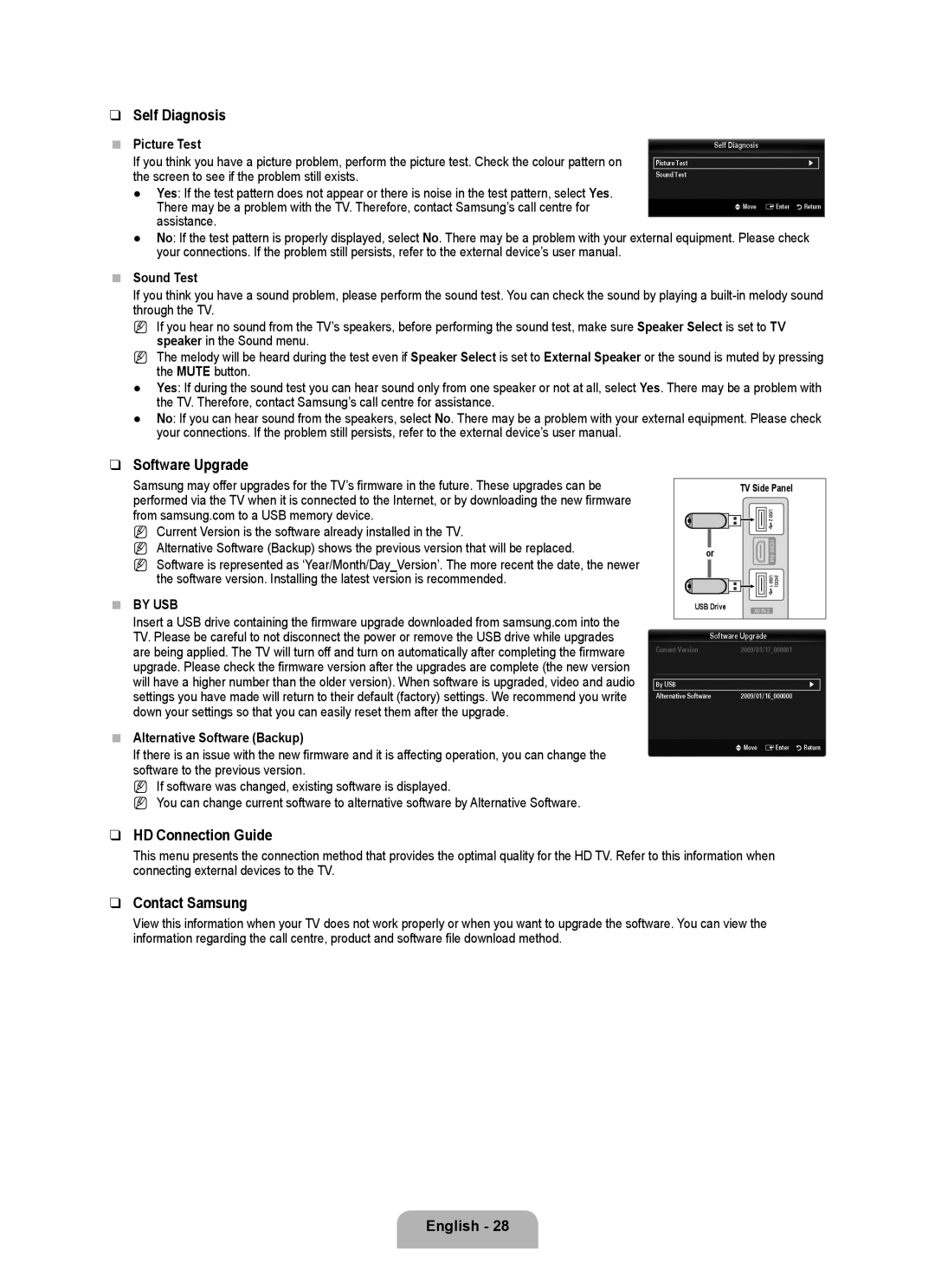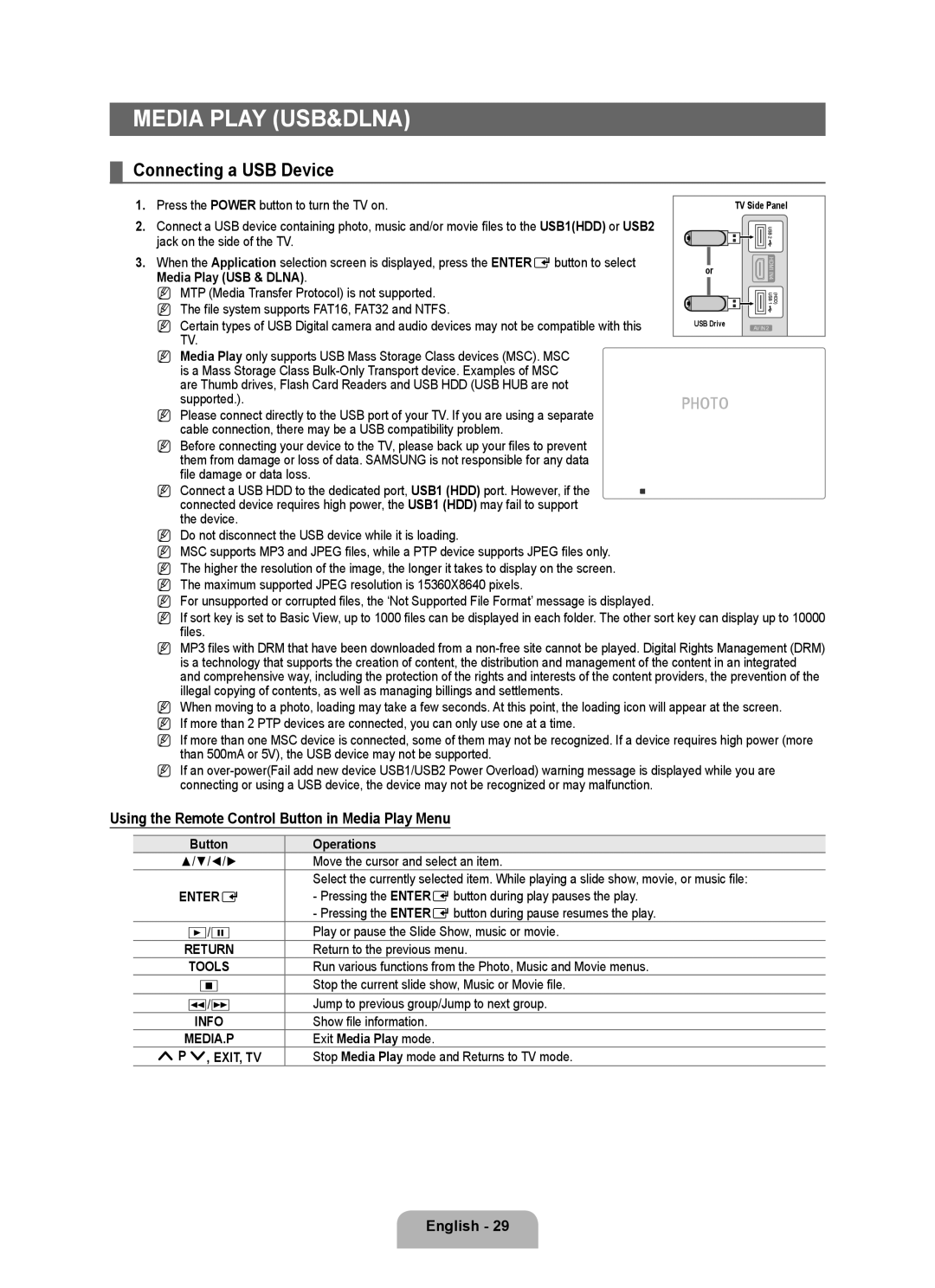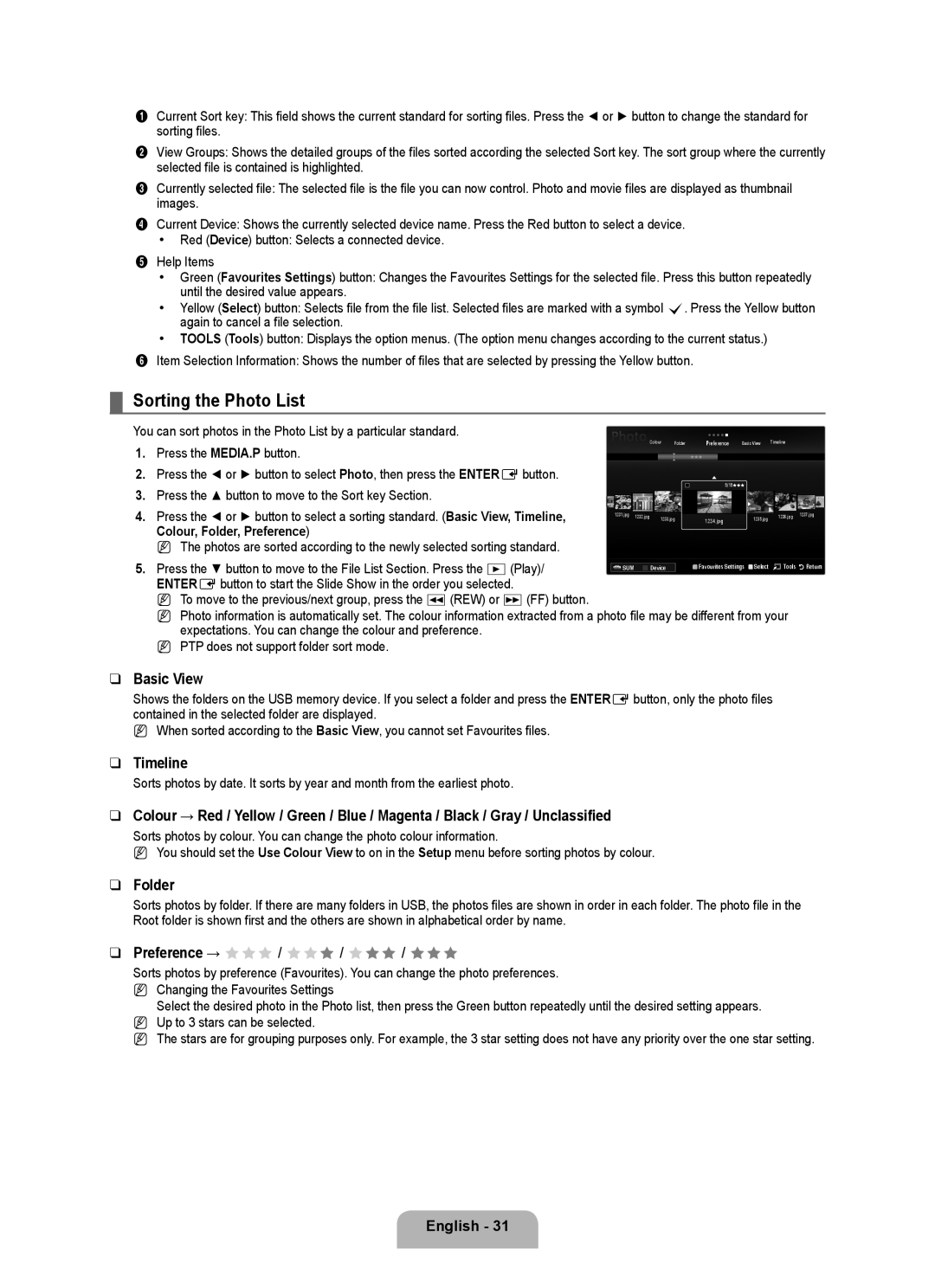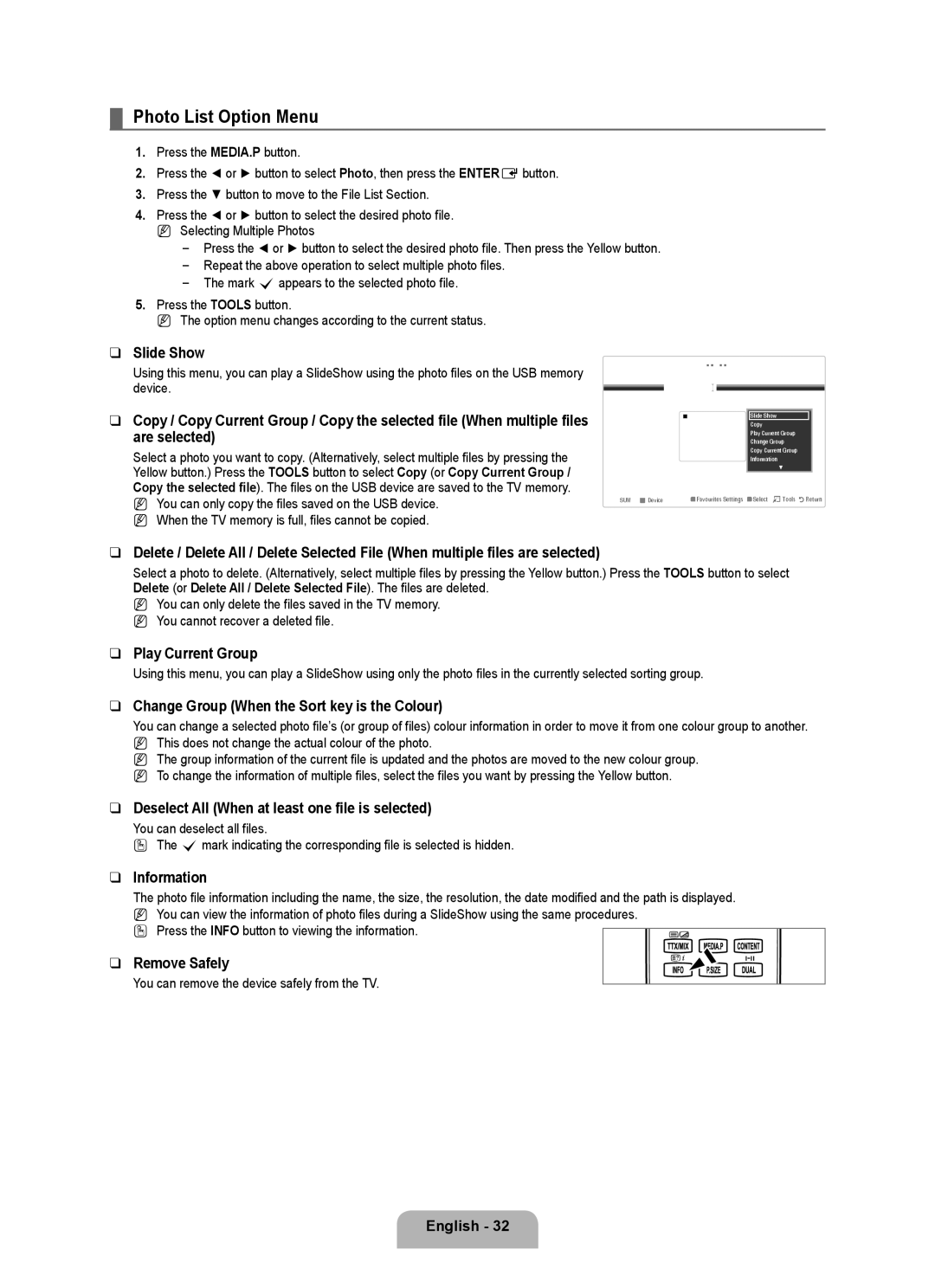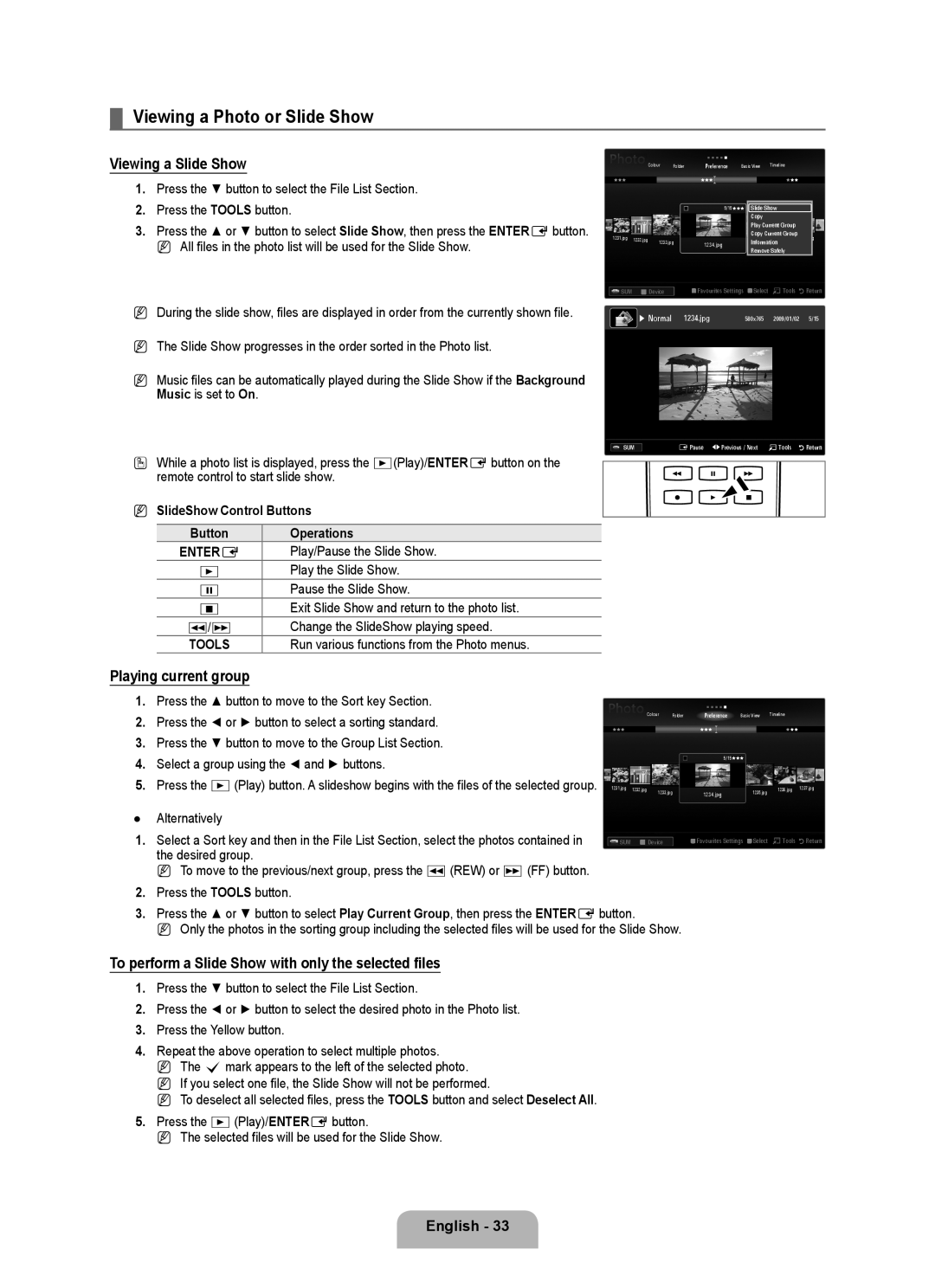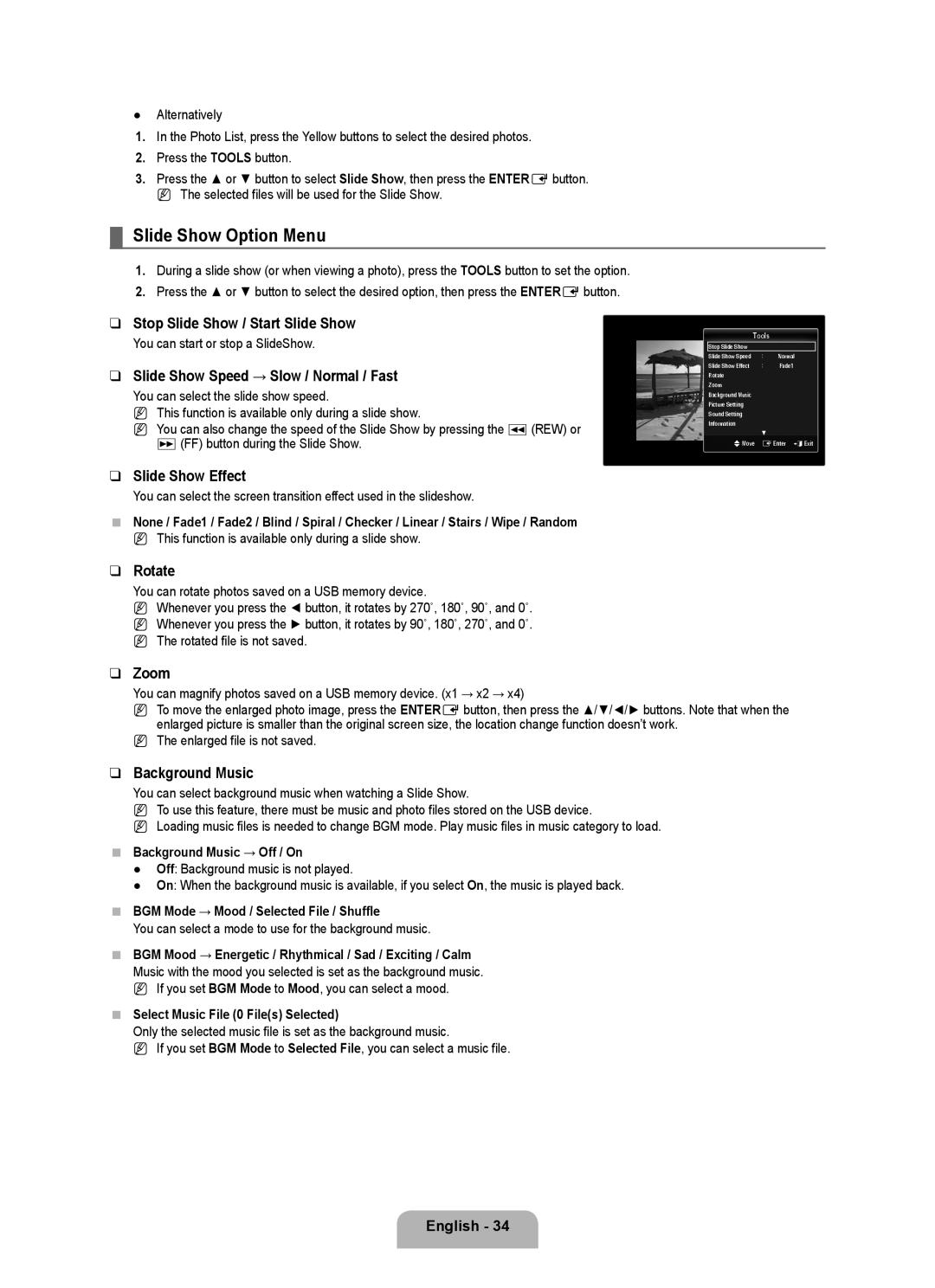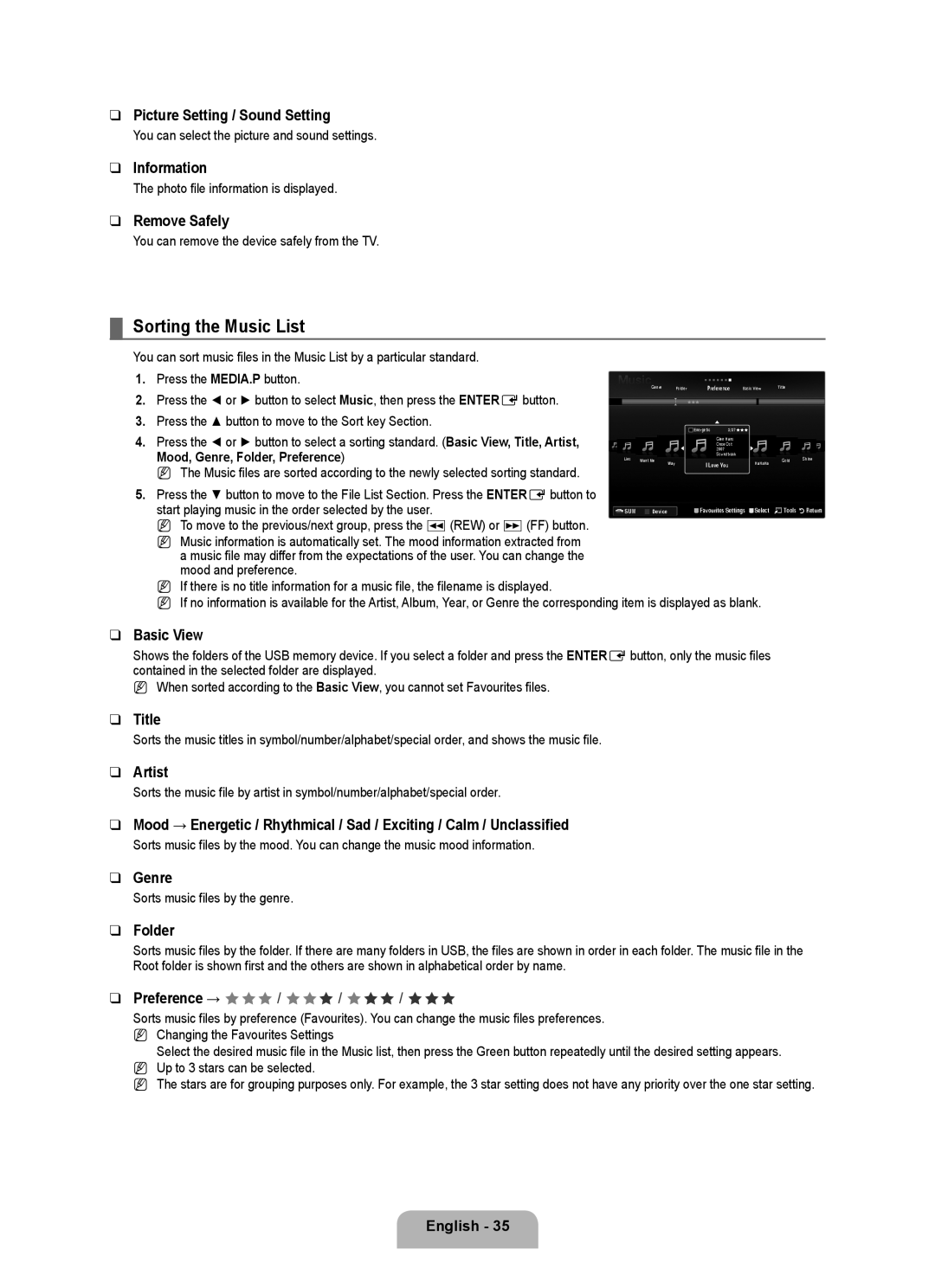Contents
Serial No
Contact Samsung Worldwide
Precautions When Displaying a Still Image
License
Contents
Setting UP Your TV
Viewing the Control Panel
Program CD Cleaning Cloth
Accessories
Power Cord Stand Screw X
M4 X L16
Hdmi in 1, 2, 3DVI, 4 / DVI Audio
Viewing the Connection Panel
AV in 1, 2 Video / R-AUDIO-L
PC in PC / Audio
Connector for service only
USB1HDD / USB2
CH List Displays the Channel List on screen
Viewing the Remote Control
Numeric Buttons Press to change the channel
Exit Press to exit the menu Press to change channels
Viewing the menus
Installing Batteries in the Remote Control
Operation
Operation the OSD On Screen Display
If you want to reset this feature
Placing Your Television in Standby Mode
Plug & Play Feature
Message Select the OSD Language. is displayed
Channel
Channel Menu
Managing Channels
English
Channel List Option Menu in Programmed
Mode
Configuring the Picture Menu
Picture
Colour Space
Dynamic Contrast → Off / Low / Medium / High
Gamma
• Colour Red, Green, Blue, Yellow, Cyan or Magenta
Picture Options
Viewing Picture-in-Picture
Display Modes
Using Your TV as a Computer PC Display
Setting Up Your PC Software Based on Windows XP
Sub and HDMI/DVI Input
Sound
Setting up the TV with your PC
Configuring the Sound Menu
Sound Reset → Reset All / Reset Sound Mode / Cancel
Selecting the Sound Mode
Auto Volume → Off / On
Speaker Select
Setup
Configuring the Setup Menu
Setting the Time
You can connect the LAN via a Sharer Router
Network Connection
Network Connection Cable
LAN Connection for Static IP Environment
Network Connection Wireless
Cable Network Setup-Auto
Setting the Network
Network Setup
Cable Network Setup-Manual
Select a network
Connecting WPS Wi-Fi Protected Setup
Wireless Network Setup
Wireless Network Setup-Auto
How to connect to new Ad-hoc
How to connect an existing Ad-hoc device
Wireless Network Setup-Manual
Support Menu
Input / Support
Input Menu
HD Connection Guide
Software Upgrade
Self Diagnosis
Contact Samsung
Media Play USB&DLNA
Connecting a USB Device
Using the Remote Control Button in Media Play Menu
Removing a USB Memory Device Safely
Media Play Function
Entering the Media Play USB & Dlna Menu
Screen Display
Timeline
Sorting the Photo List
Basic View
Folder
Photo List Option Menu
Playing current group
Viewing a Photo or Slide Show
Viewing a Slide Show
To perform a Slide Show with only the selected files
Slide Show Option Menu
Sorting the Music List
You can change the mood information of music files
Change Group Info When the Sort key is Mood
Music List Option Menu
Playing the music group
Playing a Music
Playing a music file
Playing the selected music files
Sorting the Movie List
Music Play Option Menu Repeat Mode → On / Off
Music Play option Menu
Playing a movie file
Movie List Option Menu
Playing a Movie File
Video Play Control Buttons
Supported Subtitle Formats
Supported Video Formats
Play/Pause the movie file
Playing movie continuously Resume Play
Playing the movie group
Playing the selected movie files
Movie Play Option Menu
Movie Play Option Menu Picture Setting / Sound Setting
Caption Setting
Picture Size
Using the Setup Menu
Network Connection Diagram-Wireless
Setting the Dlna Network
Network Connection Diagram-Cable
Media PLAY-DLNA
System Requirements
Installing the Dlna Application
Install the application
Supported Formats
File
Using the Dlna Application
Programme Screen Layout
Property
Share
Cancelling a Shared Folder
Applying the Current Settings
Sharing a Folder
Server
Using the Dlna Function
Using the Dlna Menu
Help
ANYNET+
Connecting Anynet+ Devices
What is Anynet+?
To connect to a TV
Setup
Setting Up Anynet+
Switching between Anynet+ Devices
Anynet+ Menu
Listening through a Receiver Home theatre
TV Remote Control Buttons Available in Anynet+ Mode
Recording
Device Type Operating Status Available Buttons
HDMI-CEC is set to On in the Anynet+ Setup menu
Troubleshooting for Anynet+
Problem Possible Solution
Plug & Play, etc
Using the Content Library Menu
Content Library
Using the Content Library
Using the Remote Control Button in Content Library Menu
Using the TV Memory Contents
Using the Content Management
Content Management
Getting Started with Internet@TV
Setting up Internet@TV
INTERNET@TV
Single Sign On
Using the Internet@TV service
Country Website
Troubleshooting for internet@TV
Help Website
Home Network Centre
Connecting to the Home Network Centre
Home Network Centre
About the Home Network Centre
Media
Setting Up the Home Network Centre
Message
Schedule Alarm
Using the Message Function
Call Arrival Alarm
Message View
Using the Media Function
Media play control buttons
6index
Teletext Feature
Recommendations
Teletext pages are organized according to six categories
Installing the Stand
Disconnecting the Stand
Anti-Theft Kensington Lock
Installing the Wall Mount Kit
Assembling the Cables
Securing the TV to the Wall
To avoid the TV from falling
Problem
Troubleshooting Before Contacting Service Personnel
Before contacting service personnel
No sound or picture Normal picture but no sound
Specifications
Version 3, 29 June
Preamble
Conveying Verbatim Copies
Conveying Non-Source Forms
Page
Page
Limitation of Liability
How to Apply These Terms to Your New Programs
Revised Versions of this License
Interpretation of Sections 15
GNU Lesser General Public License Lgpl
Conveying Verbatim Copies
Conveying Non-Source Forms
Page
Page
END of Terms and Conditions
OpenSSL License
Original SSLeay License
This page is intentionally Left blank

![]()
![]()
![]() 7
7